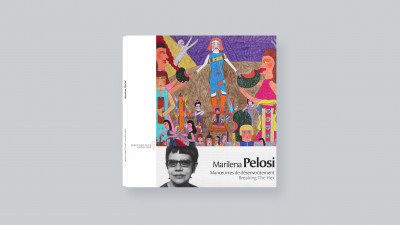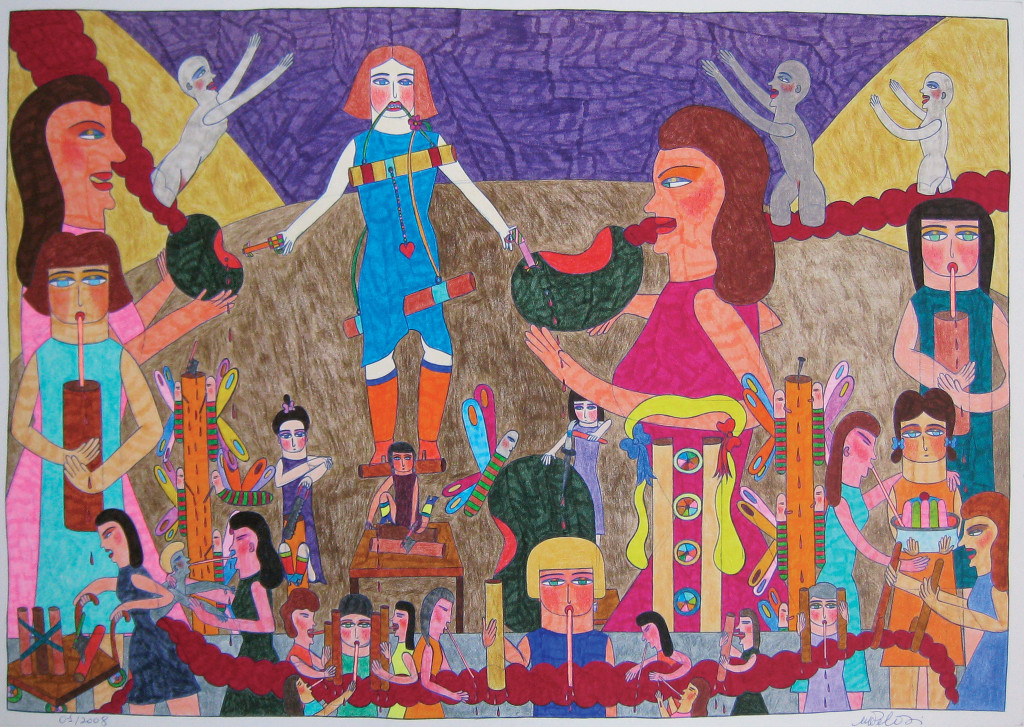marilena pelosi 2009
breaking the hex
While being outside the cultural mainstream was long considered a sine qua non of Art Brut, this is no longer held to be a key criterion. However, the transgression and transfiguration of culture – whether popular or elitist – remains a constant feature of Art Brut.
Marilena Pelosi’s art is a perfect example: in her works, the exuberant Catholicism and feverish Macumba of her native Brazil come together in a giddy whirl. Reminiscences of trances, eucharistic processions, and devilish carnivals are inextricably bound up with more intimate memories of her solitary childhood, fleeing a forced marriage with a Macumba priest, and her years of rootless drifting around the world.
Marilena Pelosi’s sober, unadorned lines create a cruel fairy world full of symbols, in which meaning slips away, defying all reason – especially her own, even if, as she admits, “ It’s normal people who become insane. But because I’ve never been normal, I’m not at any risk”.
At a very young age, Marilena Pelosi began to make drawings in which exuberant Catholicism and feverish Macumba, from her native Brazil, swirled to the point of delirium. The reminiscence of trance, eucharistic processions and carnivals are inextricably combined with much more intimate evocations. Established in France for several decades, she continues these same troubling drawings, made with ballpoint pens, in which doll-women are both executioners and victims. Now part of the CNAP collection, in 2019 she will join BIC (France), and in 2021 the Musée d’art moderne (Pompidou, France) and was recently included in the collections of LaM - Lille Métropole Musée d’Art Moderne, Art Contemporain, and Art Brut in 2025 (France).

Preface : Laurent Danchin
Foreword : Christian Berst
Catalog published to mark the exhibition Marilena Pelosi : breaking the hex, from february 13th to march 14th, 2009.
Co published with les éditions Le livre d’art, 2009.

